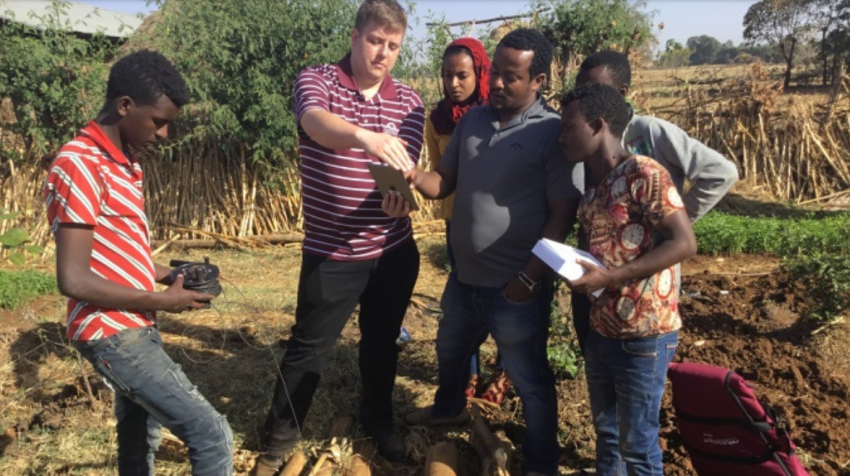The question of how science, research, and study address challenges, pinpoint innovative solutions and reach people in need, is an issue of concern for academic institutions. On that note, the School of Engineering of the University of Connecticut, a UNAI member institution in the United States, is leading a group of researchers to tackle how scientific knowledge is disseminated and applied in their Water and Food Security, Partnerships for International Research and Education (PIRE) project, funded by the National Science Foundation.
The Water and Food Security PIRE project aims to improve agricultural productivity and water management in low-income agricultural communities in the Blue Nile Basin, in northeast Africa. The main goal is to provide accurate seasonal predictions on farm-scale water availability and the corresponding crop yields during both wet and dry seasons. Local communities rely on the Blue Nile Basin to sustain their crops and in turn sustain themselves, but rainfall and water levels in the area can be unpredictable, causing crop failure and food shortages.
The project offers farmers the tools to help overcome such challenges and complement existing indigenous knowledge, while adding the strength of researched-backed forecasts and water management methods.It also brings together people and resources from across disciplinary, cultural, and geographical boundaries to promote knowledge-driven and rights-based interventions. It promotes collaboration as well between various stakeholders, through sociological and engineering research methods for a people-centered approach.
Such an approach within a collaborative endeavor, integrates higher education, professional training, and community outreach into the program to develop human capital and social connections between scientists, farmers, policymakers, and students in the United States and in Ethiopia. The project is led by Emmanouil Anagnostou and Elizabeth Holzer from the University of Connecticut, Paul Block from the University of Wisconsin-Madison, Liang You from the International Food Policy Research Institute, and Yang Hong from the University of Oklahoma.
The collaborating institutions in Ethiopia include the Bahir Dar University, Abay Basin Authority, the National Meteorological Agency, and the Ministry of Water. The first three years of the project, until 2019, included site selection and feasibility assessments, research work pertaining to developing hydrological and crop models in the Upper Blue Nile region, as well as the design and implementation of social surveys. As part of the project, four communities were selected for survey. Two of them entail irrigation projects, whereas the other two, were rainfed.
In total, 1,856 household surveys and about 121 semi-structured interviews were led by PhD students of Social Sciences from the University of Connecticut, between 2018 and 2019. At the same time, dynamic and statistical weather forecast tools and sophisticated models were developed by graduate students from this institution and also from the University of Wisconsin Madison, in order to simulate variables such as the river flow, groundwater levels, soil moisture, and crop production in these communities during the wet and dry seasons.
Once these scientific models were established and applied to forecasts, they needed to be shared to have an impact. The social science team worked to make the information accessible by creating visually appealing, farmer-friendly bulletins. Project sociologist Ezana Atsbeha said that “the best part of the project was working with farmers on developing and communicating the forecast bulletin. We worked to develop the interventions together and we had the opportunity to speak with them to take their feedback and tweak the next rounds of forecast bulletins.”
Despite the COVID-19 pandemic, the project has managed to continue its development, as well as local food and water security improvements. The project has shared five seasonal forecasts and is working towards preparing the forecast for the 2021-22 dry season, while looking to establish a data and knowledge repository that will archive scientific models, computer codes, and up-to-date tools used to perform the seasonal forecast activities, to ensure that the tools can be used by local Ethiopian agencies and researchers, to keep helping the local stakeholders.
The Water and Food Security PIRE project continues to publish forecasts and collect data, and maintains rich partnerships with researchers, students, and communities in Ethiopia, the United States, and several other countries and institutions around the world. The success of this project highlights the immeasurable value of knowledge sharing across borders, and learning from those who are closest to the problem. Though the roster of researchers includes many who reside halfway around the world, the work is grounded in local perspectives and needs.

